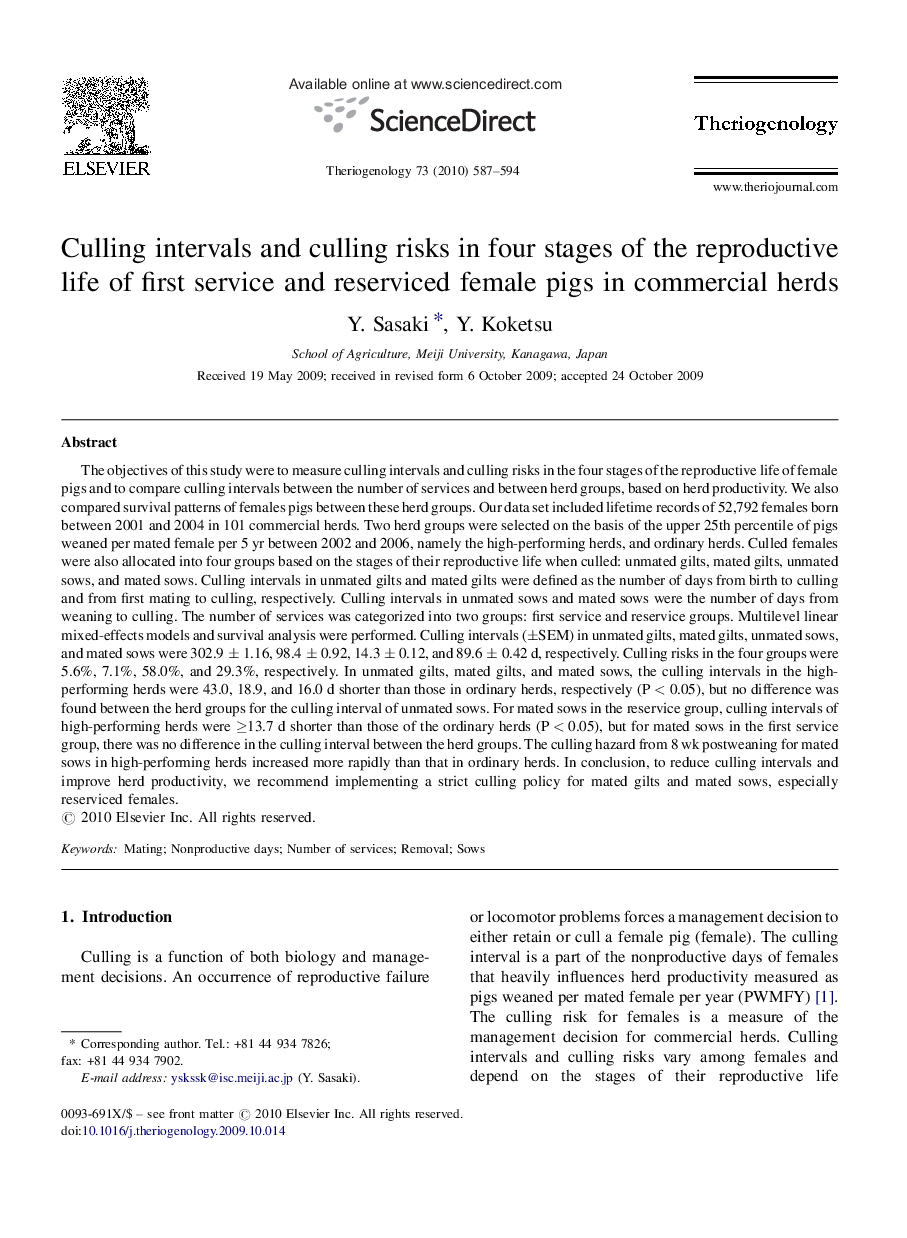| کد مقاله | کد نشریه | سال انتشار | مقاله انگلیسی | نسخه تمام متن |
|---|---|---|---|---|
| 2095603 | 1082128 | 2010 | 8 صفحه PDF | دانلود رایگان |

The objectives of this study were to measure culling intervals and culling risks in the four stages of the reproductive life of female pigs and to compare culling intervals between the number of services and between herd groups, based on herd productivity. We also compared survival patterns of females pigs between these herd groups. Our data set included lifetime records of 52,792 females born between 2001 and 2004 in 101 commercial herds. Two herd groups were selected on the basis of the upper 25th percentile of pigs weaned per mated female per 5 yr between 2002 and 2006, namely the high-performing herds, and ordinary herds. Culled females were also allocated into four groups based on the stages of their reproductive life when culled: unmated gilts, mated gilts, unmated sows, and mated sows. Culling intervals in unmated gilts and mated gilts were defined as the number of days from birth to culling and from first mating to culling, respectively. Culling intervals in unmated sows and mated sows were the number of days from weaning to culling. The number of services was categorized into two groups: first service and reservice groups. Multilevel linear mixed-effects models and survival analysis were performed. Culling intervals (±SEM) in unmated gilts, mated gilts, unmated sows, and mated sows were 302.9 ± 1.16, 98.4 ± 0.92, 14.3 ± 0.12, and 89.6 ± 0.42 d, respectively. Culling risks in the four groups were 5.6%, 7.1%, 58.0%, and 29.3%, respectively. In unmated gilts, mated gilts, and mated sows, the culling intervals in the high-performing herds were 43.0, 18.9, and 16.0 d shorter than those in ordinary herds, respectively (P < 0.05), but no difference was found between the herd groups for the culling interval of unmated sows. For mated sows in the reservice group, culling intervals of high-performing herds were ≥13.7 d shorter than those of the ordinary herds (P < 0.05), but for mated sows in the first service group, there was no difference in the culling interval between the herd groups. The culling hazard from 8 wk postweaning for mated sows in high-performing herds increased more rapidly than that in ordinary herds. In conclusion, to reduce culling intervals and improve herd productivity, we recommend implementing a strict culling policy for mated gilts and mated sows, especially reserviced females.
Journal: Theriogenology - Volume 73, Issue 5, 15 March 2010, Pages 587–594